Although the two Daisho swords, are not forged by the same blacksmith, are geographically very close because they are neighbors and, in fact, they were recorded on the same day of the same year (1966) that is to say 55 years ago and especially in the same place indicating one and the same provenance and very likely the former property of one and the same family, especially since the Mihara School's sword originates from Hyogo (Kobe) prefecture of the place of registration. It is easy to think that this is an authentic Daisho, created for a long time.
DAI – Katana : Magnificent Katana with its Tachi Mumei blade in Koshirae and Shirasaya (Tsunagi, fukuro), certified and attributed to Yamato Norinaga Eisho Era. Beautiful Hamon Suguha and Boshi in Ko-maru, old polishing in good condition.
• Torokusho : Issued by the Prefecture of Hyogo (central Japan) under number 47640 dated April 7, 1966.
• Certificates : Kantei sho (Certificate of Expertise) N ° 20058 - Date: REIWA 2 Nen, 6 Gatsu, 27Nichi. EITHER: June 27, 2020.
• Mumei blade (without signature) : Attributed by TOHO TOKEN KENKYU KAI (T.T.K.K), after expertise to Yamato Norinaga, but more precisely to YAMASHIRO JU NORINAGA (name registered for the 6th generation, corresponding to the date written in the assessment.
• Location : Yamato (Yamashiro) Prefecture of Nara and precisely in UJI (famous for its Byodo-in Temple, Center Japan).
• Blacksmith school : Mihara (Masaie 1st generation.) - Location: Yamato, Center Japan (One of the 5 major schools of Yamashiro (Kyoto)).
• Period : Muromachi period, Eisho era (1504-1521).
CHARACTERISTICS
• Nagasa : 61.8cm
• Weight : 526grs
• Sori : Height: 2 cm - Chu-zori type
• Mekugi ana : 1
• Nakago type : Standard, Futsu-gata - Length: 16.1cm - End typ e: Kiri - Ichimonji - Yasurime type : Kosuji-chigai
• Mune type : Iori mune
• Sugata of type : Shinogi-zukuri
• Gorges : No-hi (without)
• Jihada of type : Itame and O-mokume
• Hamon type : Suguha
• Kissaki type : Chu-kissaki
• Boshi type : Ko-maru
• Defects : Beautiful polish and in very good condition with some small defects and scratches, not very significant. The blade is in very good condition with normal wear, as on all objects from this period.
KOSHIRAE : The Koshirae is in very good condition with normal wear and tear, as on all items from this era.
• Koshirae with wooden blade, Tsunagi
• Tsuba : With the theme of Daikon *, the equivalent of a very large black radish (white) with leaves and bud and arabesques in gold inlay in Nunomezogan - Type : Maru-gata (round) and in Yo -sukashi-bori type called "Daikon Sukashi Tsuba" (Cutout of the Tsuba with the patterns made in the round). Material: Brushed iron. The particular symbolism of the motif of this Tsuba, joins the prosperity for the descendants, through the fork-shaped Daikon, vehicle of the god Daikoku who brings his wealth by hitting the rice husks with his hammer.
• Fuchi / Kashira : With the theme of a Kamon, Kiri Mon “Leaves of paulownia” on Fuchi. Perhaps a nod from the previous owner, for the identification of his family name?
• Habaki and Seppa : Botan Niju-Habaki (in 2 parts) - Material : Copper covered with gold leaf. Menuki with the theme and then with the Tsuba, leaves and roots of Daikon.
• Ito Maki of type : Tsumami-maki - Very beautiful Same in full winding
• Saya : With lacquer chips - Ancient silk Sageo.
SHO - Wakizashi : Magnificent blade of Wakizashi in Koshirae and Shirasaya (Tsunagi, Fukuro), signed "Bishu Osafune Sukesada", Very beautiful Hamon Gunome and Boshi in Ko-maru with a long Kaeri, polishing in very good condition. Maintained blade.
• Torokusho : Issued by the Prefecture of Hyogo (central Japan) under the number 47641 dated April 7, 1966.
• Zaimei blade (with signature) : BISHU OSAFUNE SUKESADA
• Location : Bizen
• Blacksmith schoo l: Bizen - Location: Okayama Prefecture, South West Japan
• Period : End of the Muromachi Period, between the Eisho-Kyoryoku Era at the latest Tensho Era, i.e. (1504-1528 at the latest 1570)
CHARACTERISTICS
• Nagasa : 35.8cm
• Weight : 260grs
• Sori: Height : 0.7 cm - Chu-zori type
• Mekugi ana : 1
• Nakago type : Standard, Futsu-gata - Length: 10.1cm - End type: Ha-agari-kurijiri - Yasurime type: Katte-sagari
• Mune type : Iori mune
• Sugata of type : Shinogi-zukuri
• Gorges : No-hi (without)
• Jihada type : O-mokume
• Hamon type : O-gunome, Midare
• Kissaki type : Chu-kissaki
• Boshi type : Ko-maru with a very long Kaeri
• Flaws : Superb polish and in excellent condition with normal wear, as on all items of this age.
KOSHIRAE : The Koshirae is in very good condition with normal wear and tear, like all old items.
• Koshirae with Tsunagi wooden blade
• Tsuba : Having for theme the Daikon *, the equivalent of a very large black radish (white) with leaves and bud, arabesques in gold inlay in Nunome-zogan - Type : Maru-gata (round) and in Yo-sukashi-bori type called "Daikon Sukashi Tsuba" (Cutout of the Tsuba with the patterns made in the round). Material: Brushed iron. The particular symbolism of the motif of this Tsuba, joins prosperity for the descendants, through the fork-shaped Daikon, vehicle of the god Daikoku who brings his wealth.
• Fuchi / Kashira : With the theme of a Kamon, Kiri Mon “Leaves of paulownia” on Fuchi.
• Habaki and Seppa : Hitoe Yujyo-Habaki (in 1 part) - Material: Copper covered with gold leaf. Menuki with the theme and then with the Tsuba, leaves and roots of Daikon.
• No presence of Kogai or Kogatana in Koshirae.
• Ito Maki of the type : Tsumami-maki - Very beautiful Sam in full winding.
• Saya : With lacquer chips - Ancient silk Sageo.


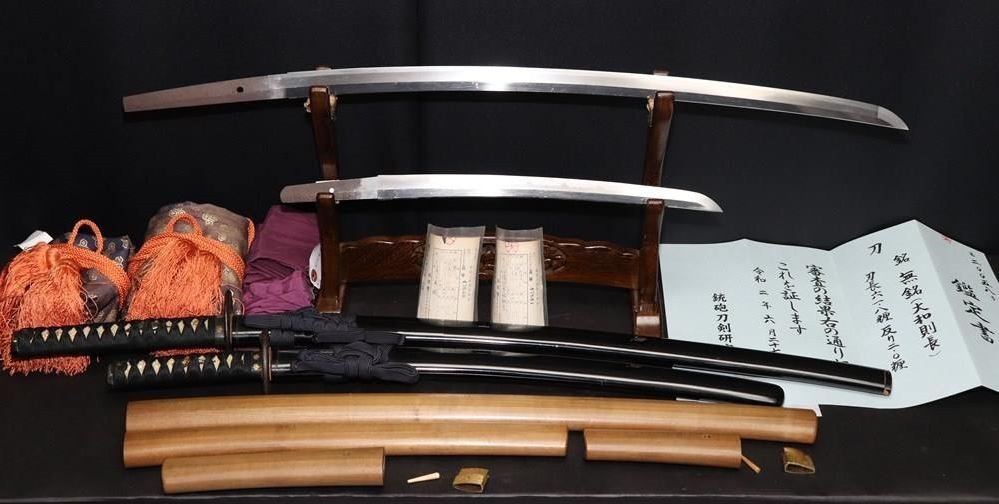
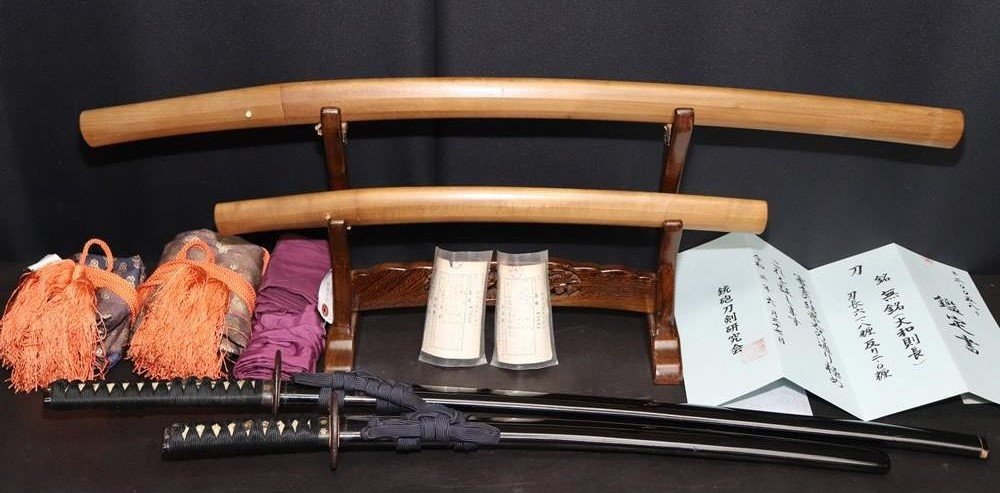
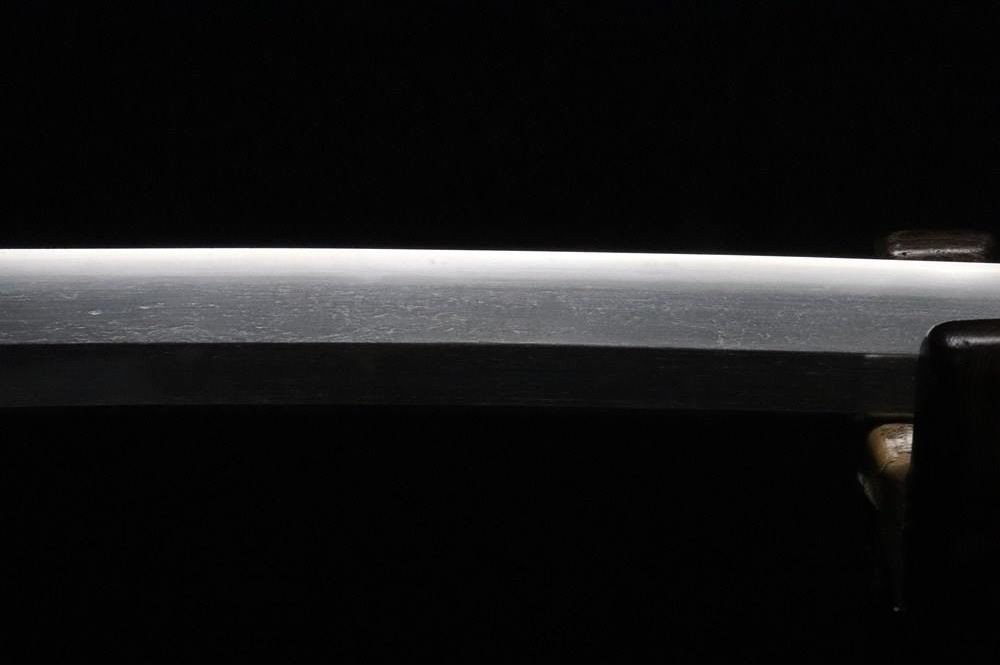
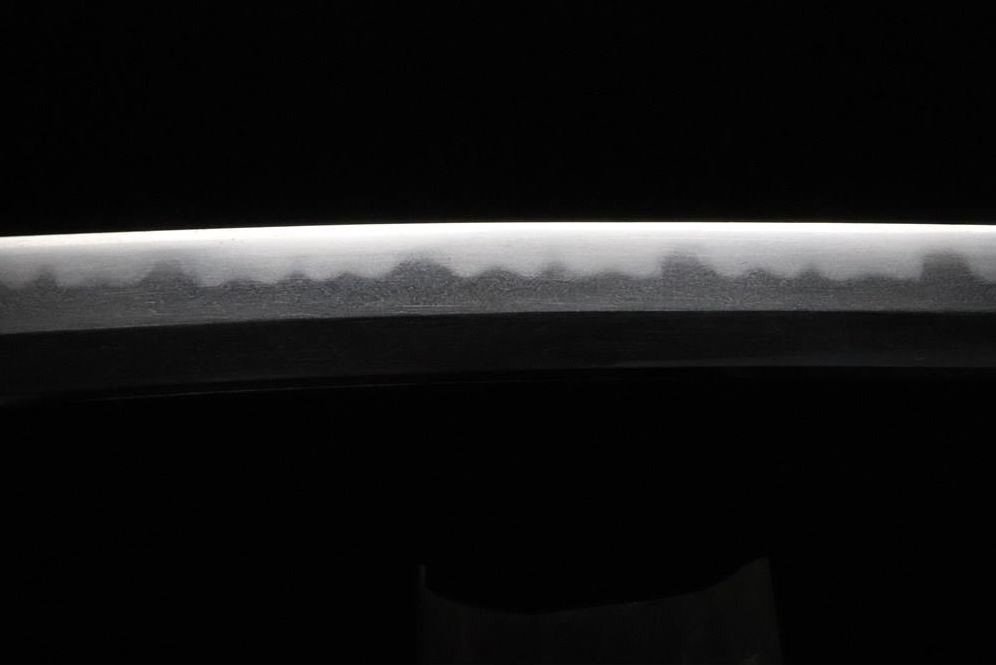


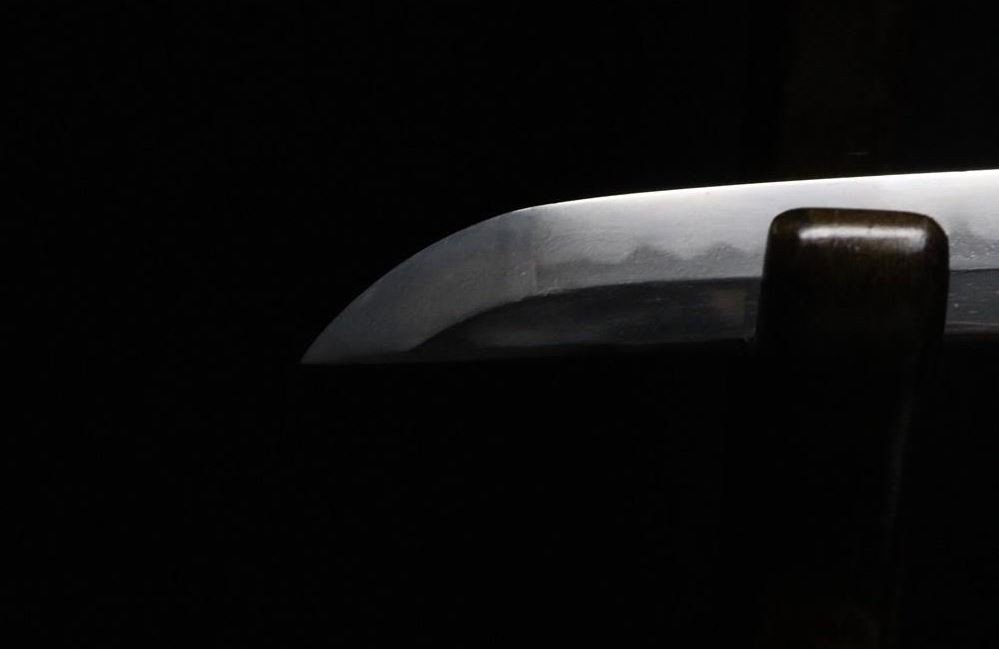
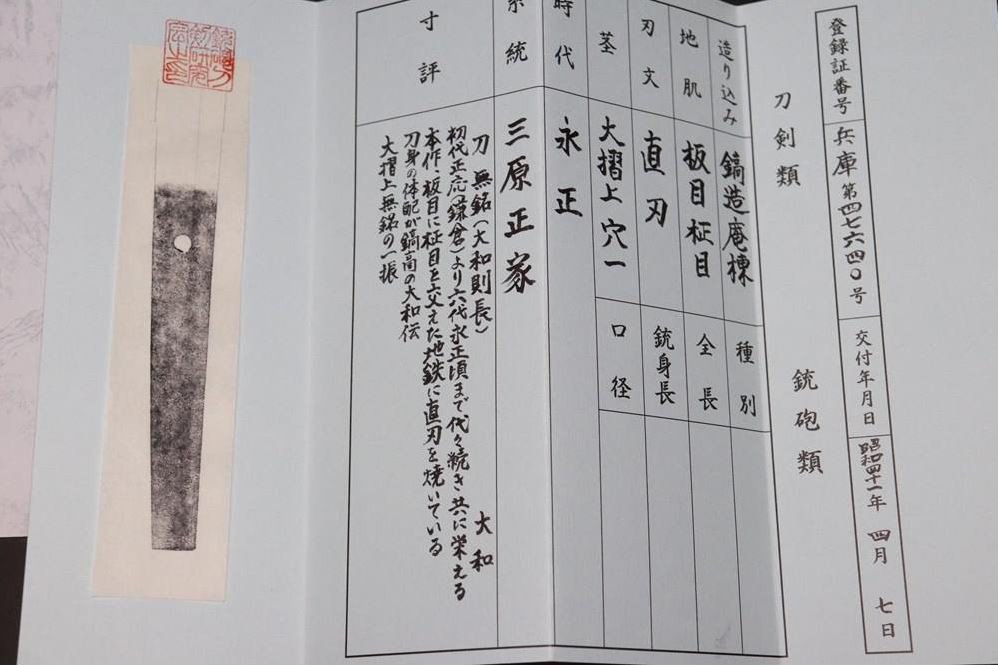
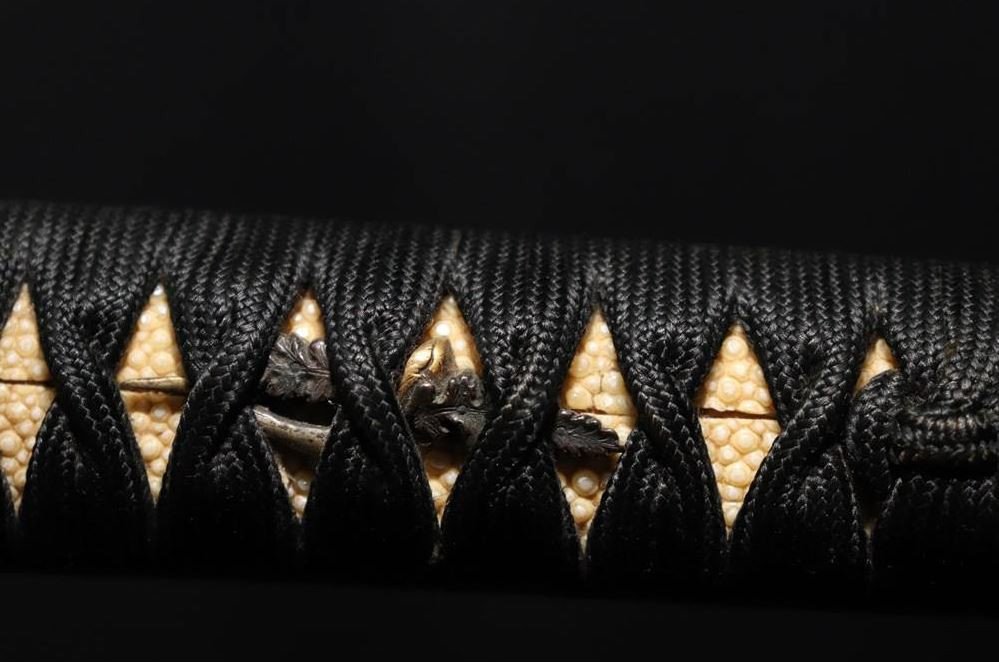

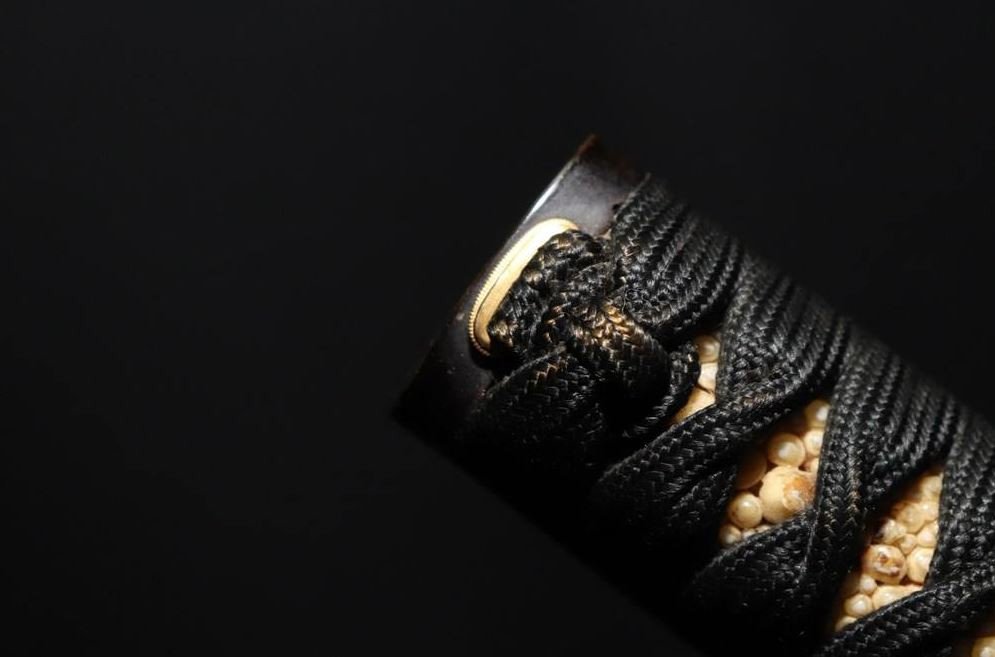
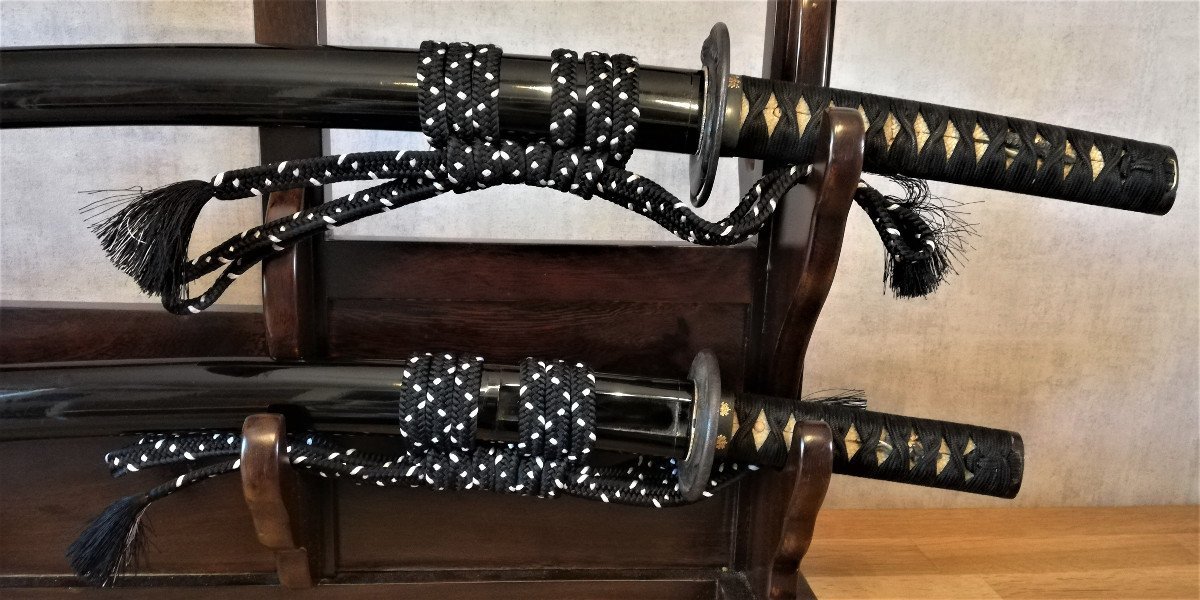





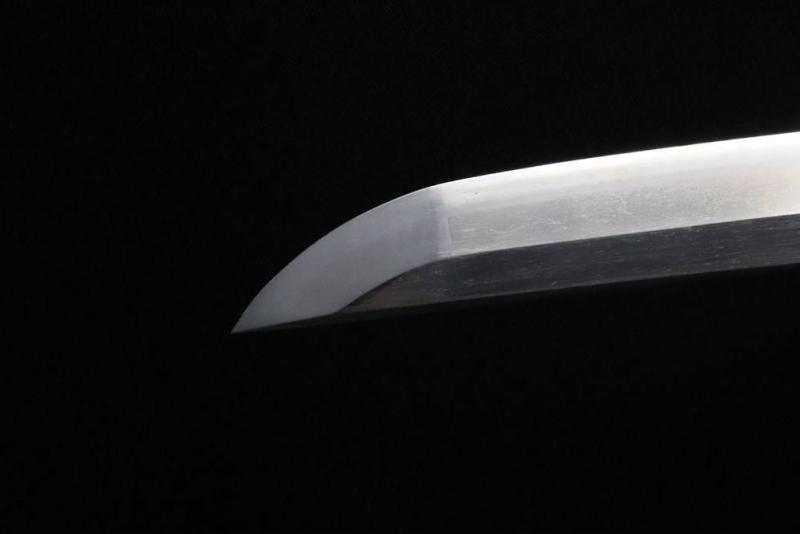



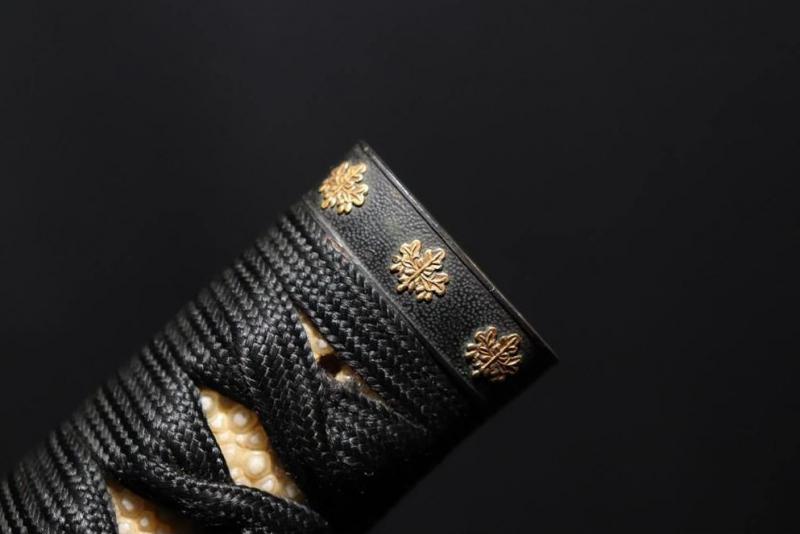



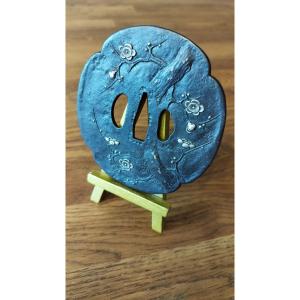


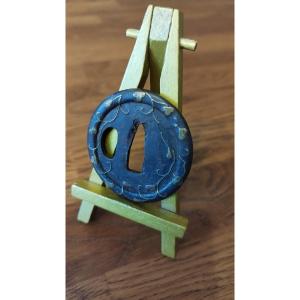

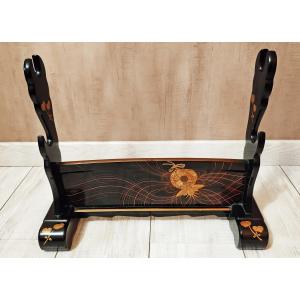

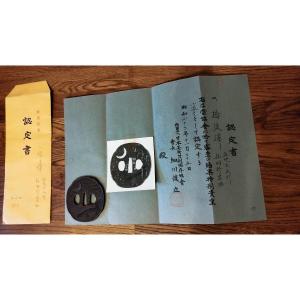


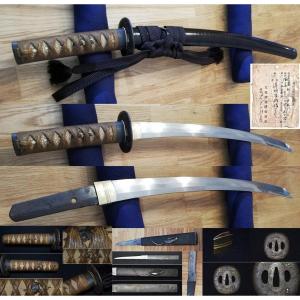





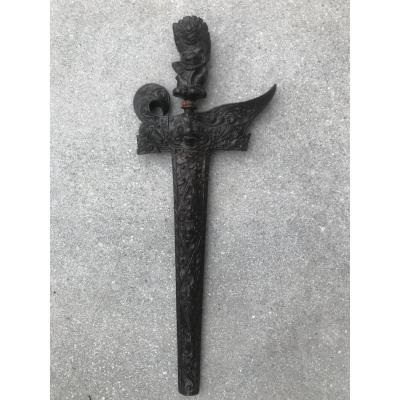





 Le Magazine de PROANTIC
Le Magazine de PROANTIC TRÉSORS Magazine
TRÉSORS Magazine Rivista Artiquariato
Rivista Artiquariato